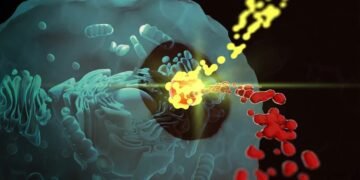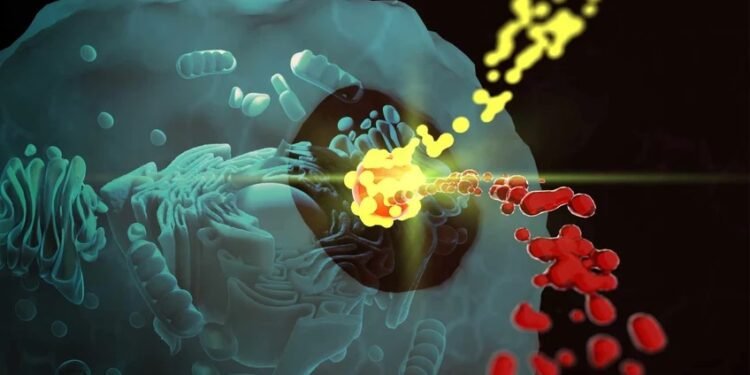New medicines, such as covid-19 vaccines, among others, rely on drug delivery using nanoparticles. For a long time it has not been clarified whether the transport of this drug is negatively affected by the accumulation of blood proteins on the surface of the nanoparticle. Scientists at the Max Planck Institute for Polymer Research have investigated the particle’s path from the cell using a combination of several research methods. They can (In the heart of the cell) see the process inside the cell that separates well into the blood and nanoparticles.
Nanoparticles are an area of current research and it is impossible to imagine modern medicine without them. They serve as visible drug capsules that are less than one thousand millimeters in diameter. Among other things, they are now being used in the Corona virus vaccine to deliver the active ingredients where they are really needed. In most cases, the capsules cling to the cells, are enveloped by them and are absorbed by them. Inside the cell, chemical processes can then open the capsules, releasing the active ingredient.
However, this idealized process usually does not take place: as it travels through the blood, blood proteins accumulate on the surface of the nanocarrier. These also find their way into the cell. For a long time the question has not been resolved whether this process impairs the release of active substances.
Scientists working in the department of Ingo Lieberwirth and Katharina Landfester have now investigated this question. They attached nanoparticles to blood proteins with different fluorescent dyes. As a result, the two glow in different colors when viewed through a high-quality optical microscope. At the same time, the researchers can see the process at the same time in high resolution using an electron microscope.
By combining the two methods, scientists can see that cells first absorb the components of nanoparticles and blood proteins. Inside the cell, they have now discovered a surprise: the protein coating is removed from the nanoparticle and released. After some time, proteins and debris separate from the cells.
“Therefore, we think that the release of the drug into the cell is not disturbed by the protein coating,” says Ingo Lieberwirth. “However, it is now important to know exactly how the process works inside the heart of the cell.”
Scientists have published their findings in the prestigious journal Nature Communications.





































